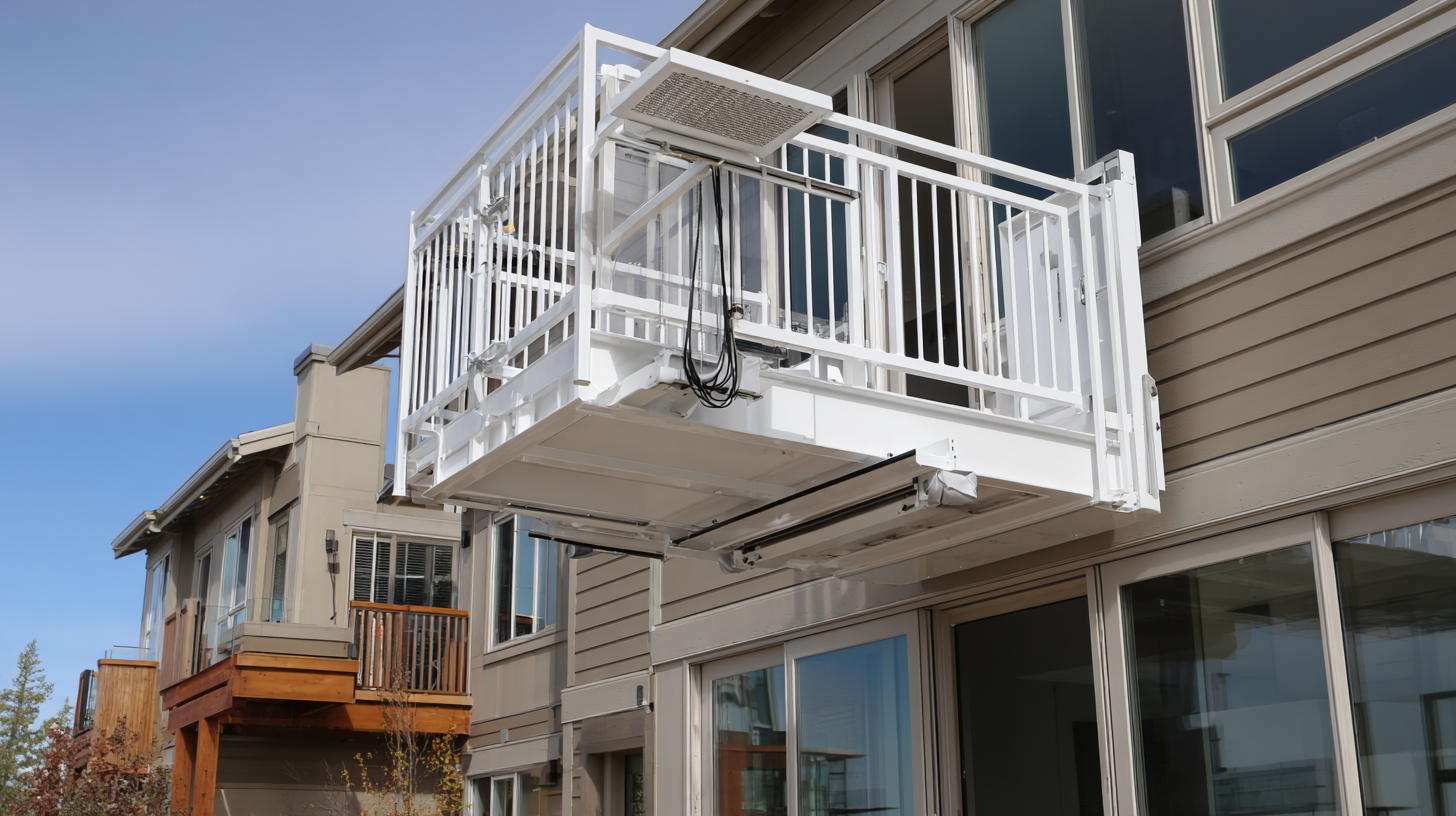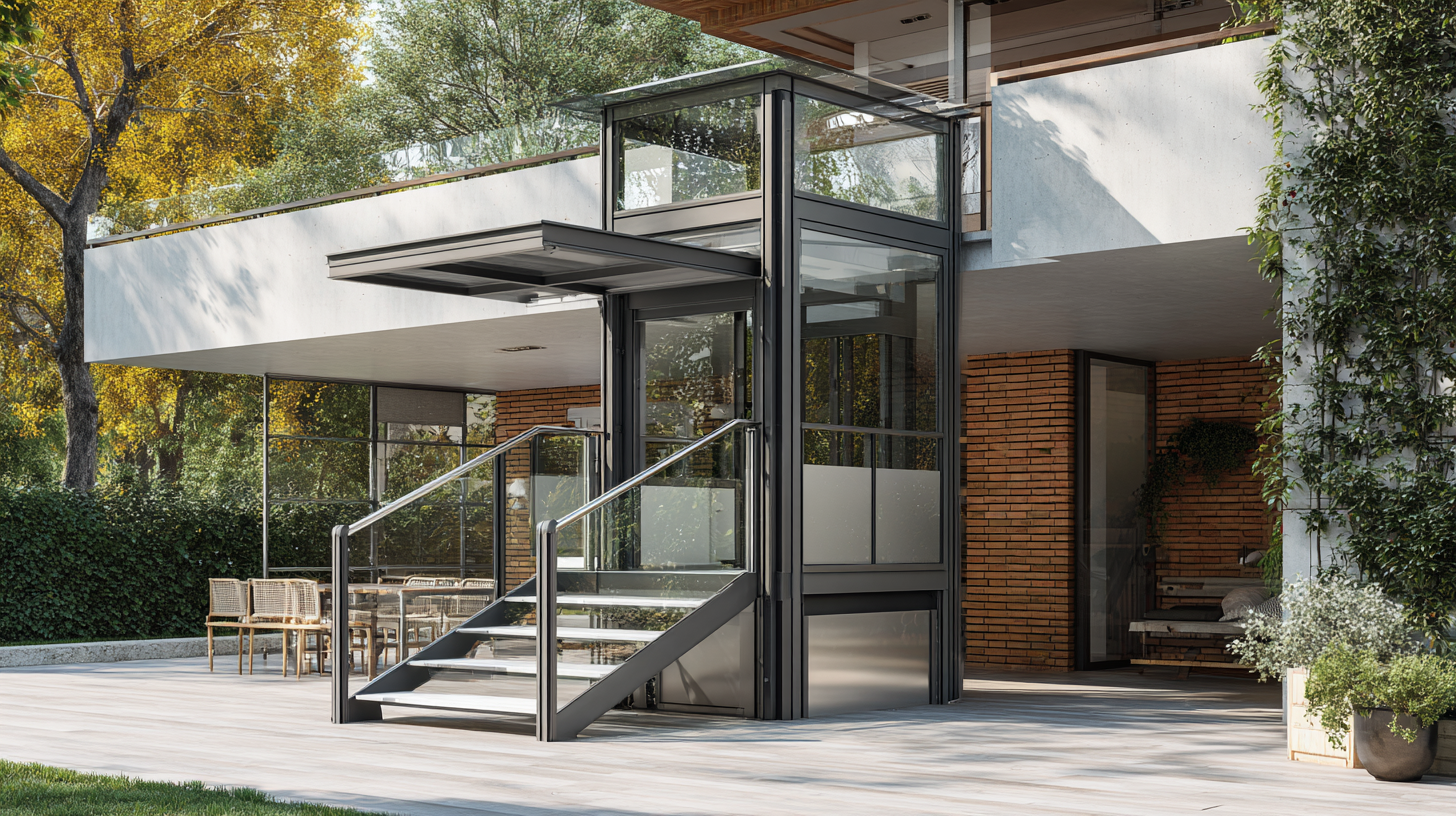Top 10 Outdoor Lift Models That Redefine Convenience and Safety
As the demand for accessibility solutions continues to grow, the
Outdoor Lift market is
evolving rapidly, driven by innovations in safety and
convenience. According to a recent report by the
National Association of Elevator Contractors, the outdoor
accessibility equipment sector is projected to see an annual growth rate of over 8%
through 2025, reflecting an increasing commitment to enhancing mobility for individuals with disabilities.
Key advancements in technology have led to the development of modern Outdoor Lift models
that not only comply with stringent safety standards but also offer greater user-friendly features. In
this blog, we will explore the top 10 Outdoor Lift models
that are setting new benchmarks in convenience and safety, ensuring that outdoor spaces remain accessible
for everyone.
Exploring Innovative Outdoor Lift Designs for Enhanced Accessibility
Innovation in outdoor lift designs is essential for enhancing accessibility and ensuring safety for users. Today’s market features a range of lift models that not only prioritize functionality but also cater to various outdoor environments. From sleek, compact designs to robust structures that can withstand harsh weather conditions, these lifts are redefining the experience for those with mobility challenges.
When choosing an outdoor lift, consider the specific needs of the users as well as the setting. Tips for ensuring the best fit include assessing weight capacity and user height variability. Additionally, look for features such as weather-resistant materials and ergonomic controls, which can significantly improve the usability and longevity of the lift.
Another important factor is the installation site. Ensure that the location allows for a straight path to the lift, minimizing potential hazards. Regular maintenance is crucial; keep an eye on moving parts and electrical components to ensure everything functions smoothly. Implementing these tips can lead to a safe and convenient outdoor lift experience that meets diverse accessibility needs.

Key Features to Consider in High-Quality Outdoor Lift Models
When considering high-quality outdoor lift models, several key features can significantly impact user experience, safety, and convenience. Firstly, the lift’s weight capacity is crucial, as it should accommodate various users without compromising stability. Look for models that offer a robust construction with corrosion-resistant materials, ensuring durability against harsh weather conditions. Additionally, ease of operation enhances safety; automated controls or simple manual mechanisms can make transitions smooth for users of all abilities.
Another important feature to consider is the lift’s safety mechanisms. High-quality outdoor lifts often come equipped with redundant safety features, such as emergency brakes, anti-slip surfaces, and reliable locking systems to prevent accidental movement. Furthermore, user-friendly design elements like intuitive controls and adjustable heights can greatly enhance accessibility. In an era where outdoor activities are becoming increasingly popular, investing in a well-designed outdoor lift model not only elevates convenience but also elevates safety standards for all users.
Comparing Electric and Manual Outdoor Lifts: Which is Best for You?
When considering outdoor lift options, one of the primary decisions revolves around choosing between electric and manual models. Electric lifts, known for their ease of use, are powered by batteries or an electrical source, allowing users to operate them with minimal physical effort. A 2021 report from the National Safety Council indicates that electric lifts can reduce the risk of injury by up to 40% compared to manual alternatives, which often require significant physical exertion. This makes them an appealing choice for individuals with mobility challenges or those needing frequent access to raised outdoor areas.
On the other hand, manual outdoor lifts hold their own appeal, especially in regions where electricity access is limited. According to a recent industry survey, nearly 35% of users prefer manual lifts due to their lower initial cost and simplicity. These lifts can be favored for applications where power supply cannot be guaranteed, although they generally require more effort and present a higher risk of injury. Ultimately, the choice between electric and manual outdoor lifts depends on individual circumstances, including physical capabilities, budget considerations, and power availability.

Safety Standards and Regulations for Outdoor Lifts in Various Environments
When considering outdoor lifts, safety is paramount, particularly in various environmental conditions. According to the American National Standards Institute (ANSI), outdoor lifts must adhere to strict guidelines to ensure user safety. These standards mandate features such as non-slip platforms, safety harnesses, and emergency stop buttons, which collectively contribute to reducing accidents. A report by the Occupational Safety and Health Administration (OSHA) indicated that properly designed lifts could reduce the risk of injury by up to 40%, highlighting the importance of compliance with these safety regulations in outdoor settings.
Environmental factors also play a critical role in the design and regulation of outdoor lifts. For instance, lifts installed in coastal areas must withstand saltwater corrosion, following the guidelines set by the National Association of Elevator Contractors (NAEC). Their research reveals that lifts designed for such conditions using galvanized steel and weather-resistant materials not only enhance safety but also prolong service life, by as much as 30%. Understanding these industry standards and environmental considerations is essential for manufacturers and users alike, ensuring that outdoor lifts remain convenient yet secure in diverse settings.
Top 10 Outdoor Lift Models That Redefine Convenience and Safety
| Model |
Weight Capacity (lbs) |
Safety Features |
Operating Environment |
Lift Type |
Compliance Standards |
| Model A |
750 |
Anti-Slip Platform, Safety Sensors |
Residential |
Vertical |
ANSI A17.1 |
| Model B |
1000 |
Emergency Stop, Alarm System |
Commercial |
Inclined |
ASME A18.1 |
| Model C |
500 |
Foldable Rail, Safety Belt |
Residential & Commercial |
Vertical |
ISO 9386 |
| Model D |
1200 |
Overload Protection, Safety Gates |
Industrial |
Inclined |
EN 81-40 |
| Model E |
800 |
Emergency Backup, Safety Railings |
Residential |
Vertical |
ISO 9001 |
| Model F |
700 |
Safety Lock, Handrails |
Commercial |
Inclined |
ANSI A18.1 |
| Model G |
1100 |
Auto Stop, Full-Control Panel |
Industrial |
Vertical |
EN 81-1 |
| Model H |
650 |
Pressure Sensing, Secure Locking |
Residential |
Inclined |
ISO 9386 |
| Model I |
900 |
Door Interlocks, Fall Protection |
Commercial |
Vertical |
ASME A18.1 |
| Model J |
550 |
Warning Lights, Safety Barriers |
Residential |
Inclined |
ISO 9001 |
The Future of Outdoor Lifts: Trends and Advancements in Technology
The outdoor lift industry is witnessing an exciting evolution, with technological advancements driving both safety and convenience for users. According to the latest insights into the global elevator market, the sector is expanding rapidly, with significant improvements in design and functionality. The data from recent reports highlights that the market size of outdoor lifts continues to grow as more people prioritize mobility solutions that ensure ease of access in various environments.
One of the key trends is the integration of smart technology into outdoor lift models. These modern lifts are equipped with features such as touchless controls and real-time monitoring systems, enhancing user experience while ensuring compliance with safety standards. Moreover, the push for energy-efficient designs not only caters to environmental concerns but also reduces operational costs, making these solutions increasingly viable for homeowners and commercial properties alike.
As the industry continues to innovate, we can expect to see even more advancements, such as AI-powered features that cater to specific user needs and predictive maintenance systems that improve reliability. The future of outdoor lifts looks promising, with a focus on creating seamless flow in outdoor spaces while ensuring that safety remains paramount.